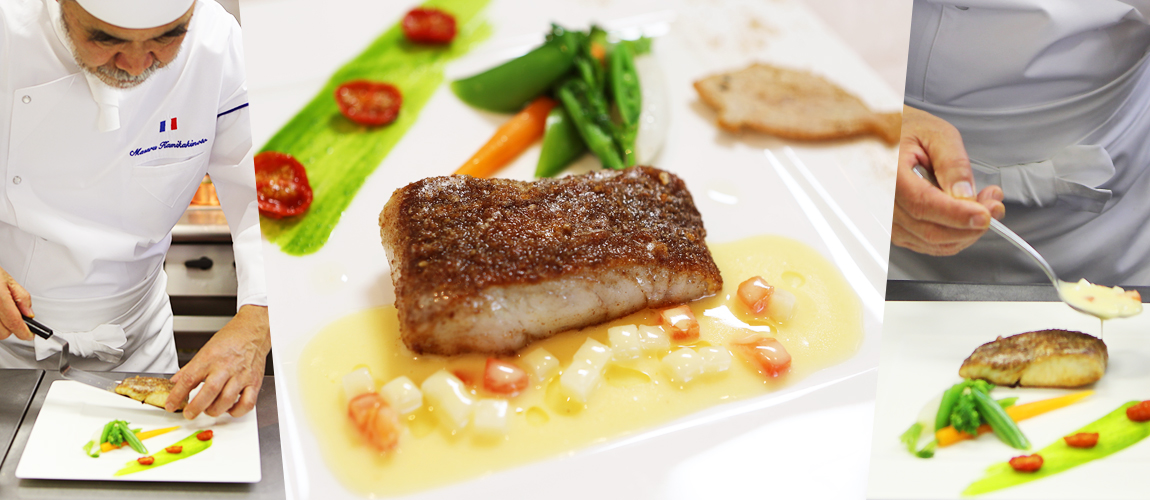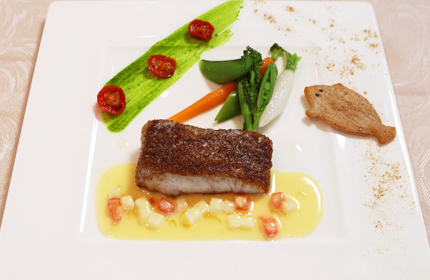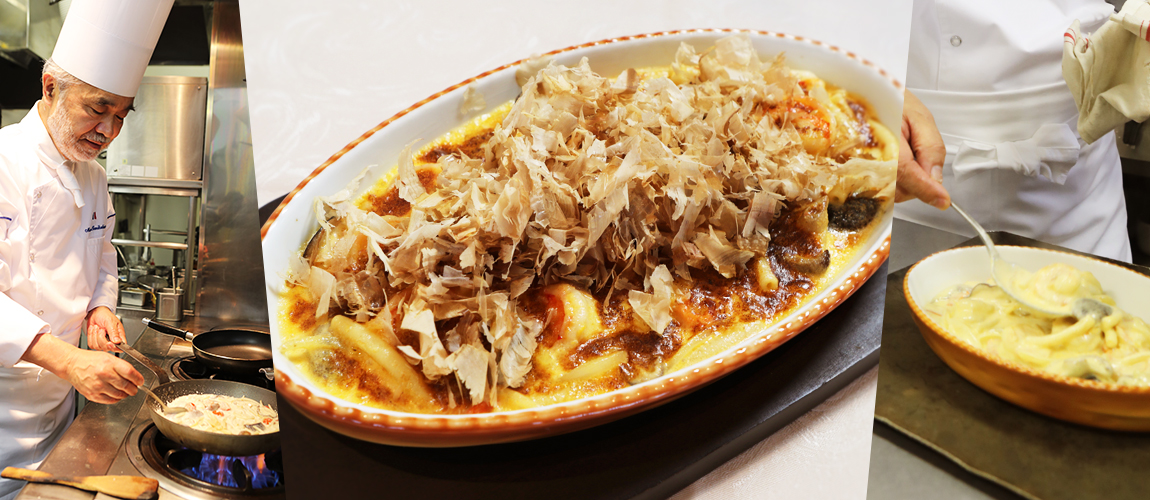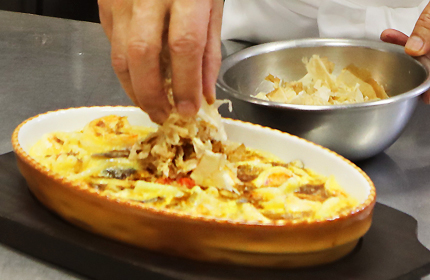The theme here is Spring - Spring connecting the two beautiful cities - Makurazaki, the motherland of this gift from the nature and the Concarneau, France where the "Katsuobushi" production has begun.
This entree is the fresh flounder grilled with spices with "Katsuobushi". On the right, you will find a flounder shaped tuile carefully placed next to the powdered "Katsuobushi" which represents the beach of Makurazaki. In the center, the green vegetables are to represent the nature and peace to celebrate the arrival of the long-overdue Spring. On the left, the red tomatoes represent the passion of the "Katsuobushi" artisan. This represents their wish to deliver Peace, Health and Flavor to the people across the world over the green bridge.



